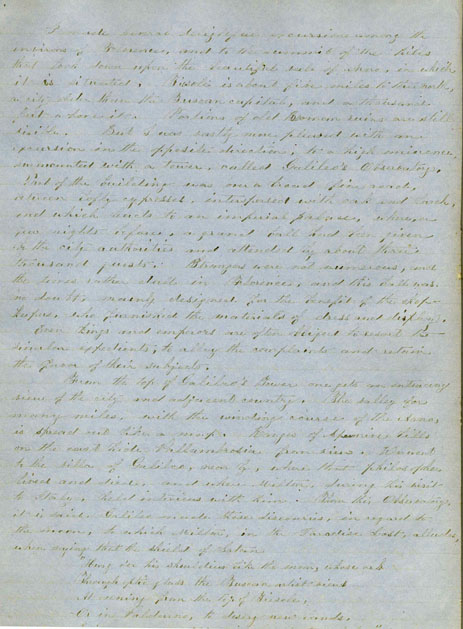 |
I made
several delightful excursions among the environs of Florence, and to the
summit of the hills that look down upon the beautiful bale of Arno, in which
it is situated. Tisole is about five miles to the north, a city abler than
the Tuscan capital, and a thousand feet above it. Portions of old Roman
ruins are still visible. But I was vastly more pleased with an excursion
in the opposite direction, to a high eminence, surmounted with a tower,
called Galileo’s Observatory. Part of the building was over a broad
fine road, between lofty cypresses, interspersed with oak and larch, and
which backs to an imperial palace, where, a few nights before, a grand ball
had been given by the city authorities and attended by about three thousand
guests. Strangers were not numerous, and the times rather dull in Florence,
and this ball was, no doubt, mainly designed for the benefit of the shopkeepers,
who furnished the materials of dress and display. Even kings and emperors
are often obliged to resort to similar expedients, to allay the complaints
and retain the favor of their subjects.
From the top of Galileo’s Tower one gets an entrancing view of the
city and adjacent country. The valley for many miles, with the winding course
of the Arno, is spread out like a map. Ranges of Apennine hills on the east
hide Pallambrosia from view. We went to the villa of Galileo, nearby, where
that philosopher lived and died, and where Milton, during his visit to Italy,
held interviews with him. From this Observatory, it is said, Galileo made
those discoveries, in regard to the moon, to which Milton, in the Paradise
Lost alludes, when saying that the shield of Satan
“Hung o’er his shoulders like the moon, whose
orb
Through optic glass the Tuscan artist views
At evening from the top of Tisole,
Or in Palderno, to desery new bands"
|
